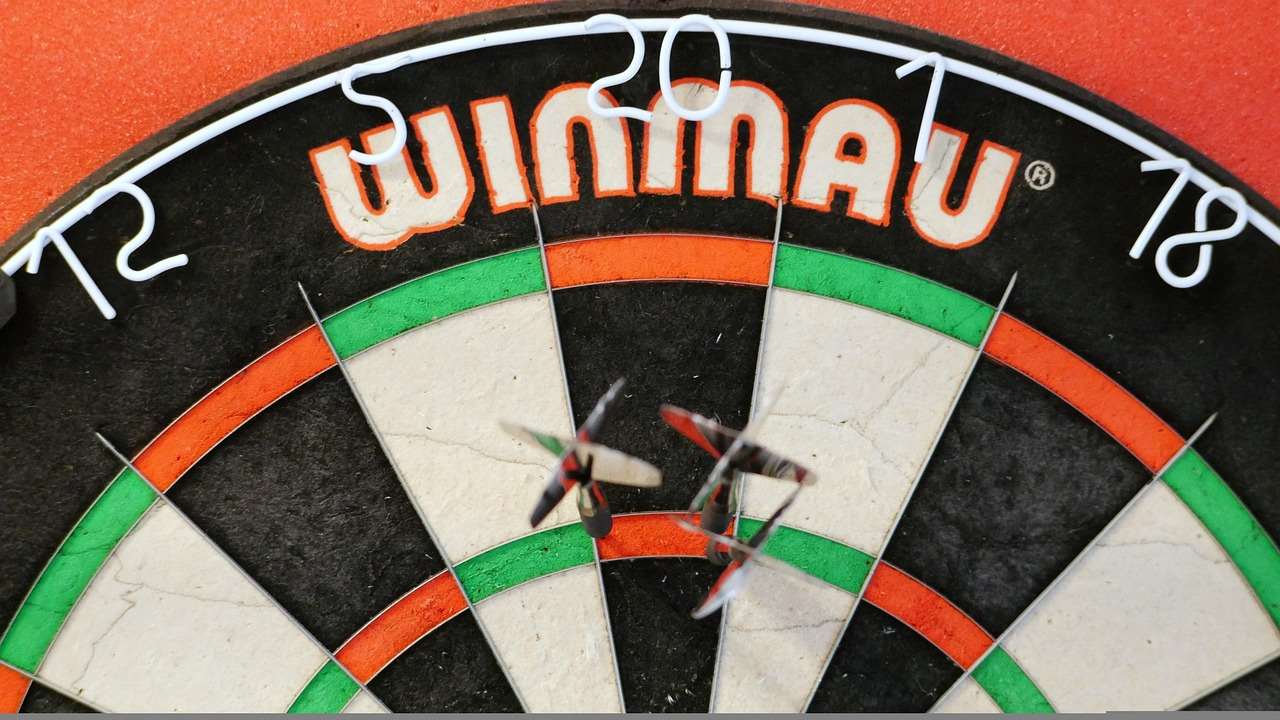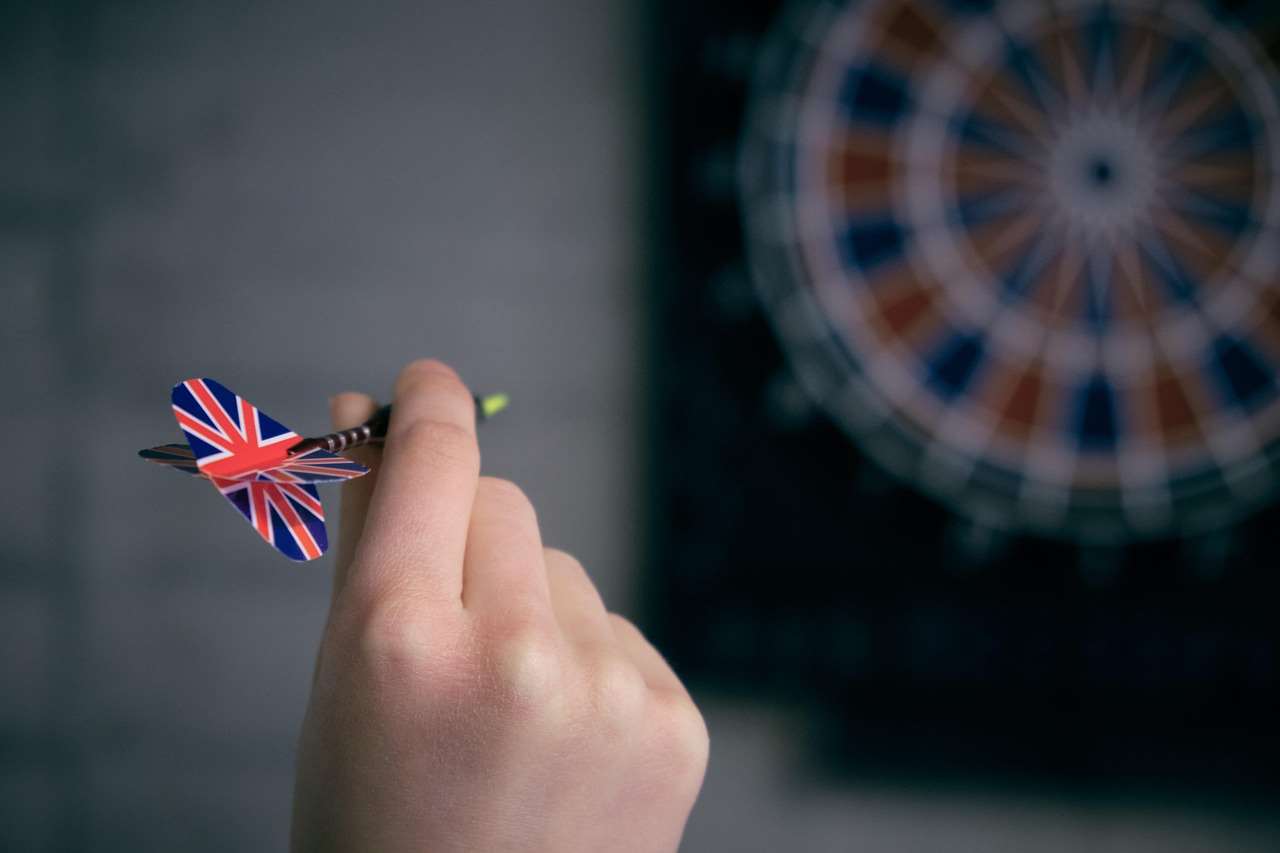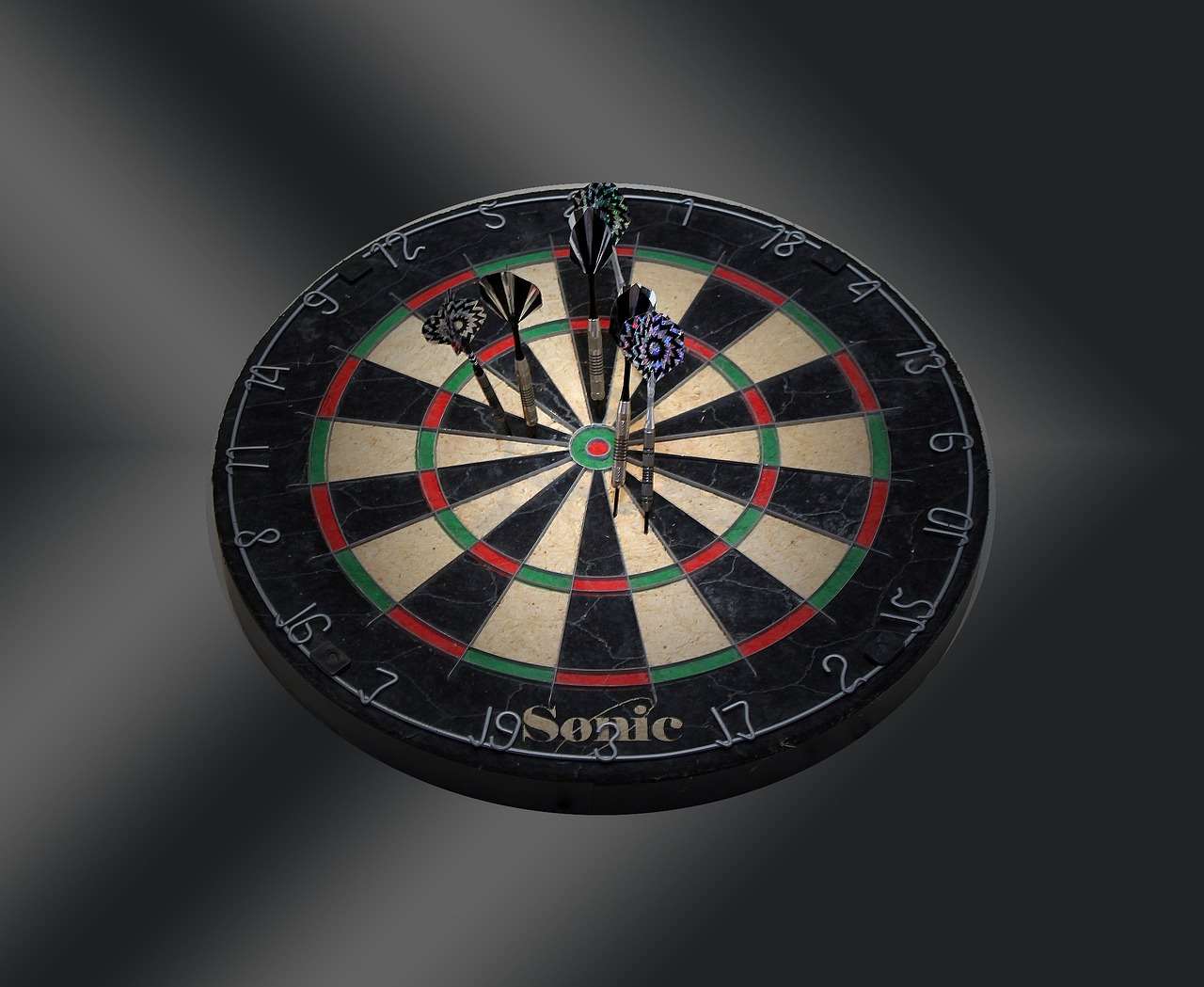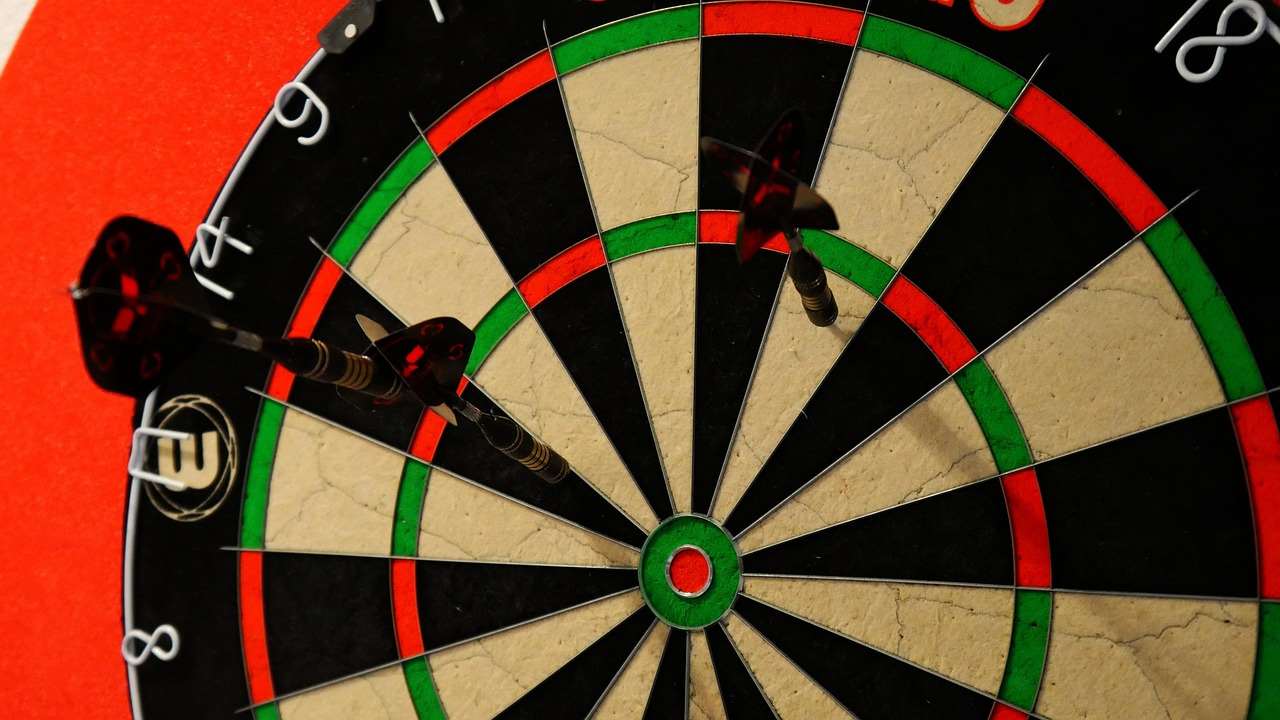Choosing the right darts shafts and flights is crucial for improving your game. This article will guide you through understanding the different types, materials, and factors to consider when selecting your perfect combination, ultimately enhancing your accuracy and consistency.
⚠️ Still Using Pen & Paper (or a Chalkboard)?! ⚠️
Step into the future! The Dart Counter App handles all the scoring, suggests checkouts, and tracks your stats automatically. It's easier than you think!
Try the Smart Dart Counter App FREE!Ready for an upgrade? Click above!
Let’s start by exploring the world of darts shafts. The shaft connects the barrel to the flight, influencing your throw’s balance and feel. Material choices range from nylon to aluminum, each offering unique characteristics. Nylon shafts are generally more affordable and flexible, while aluminum shafts provide more durability and rigidity. The length and diameter of the shaft also significantly impact the overall weight balance of your dart and the feel in your hand. Experimenting with different shaft lengths and diameters will help you find the perfect match for your throwing style.
Choosing the right shaft length is often overlooked, but it can significantly impact your accuracy. Too short, and your dart may feel unbalanced; too long, and it can affect your throw’s consistency. Consider your personal preference, your throwing style, and the weight of your barrels when choosing your shaft length. Remember, experimenting is key to finding what works best for you.

Understanding Darts Shafts and Flights: A Comprehensive Guide
This section delves deeper into the specifics of choosing the right darts shafts and flights for your game. We’ll cover the different types of shafts and flights available, as well as the factors to consider when making your selection. This includes the weight, material, and length of the shafts, as well as the shape, material, and size of the flights.
Darts Shafts: Materials and Types
Darts shafts are available in a variety of materials, each with its own advantages and disadvantages. The most common materials are nylon and aluminum. Nylon shafts are generally more affordable and flexible, making them a good choice for beginners. However, they are also more prone to bending and breaking. Aluminum shafts are more durable and rigid, but they are also more expensive. They are less prone to bending or breaking than nylon shafts, making them ideal for more experienced players.
Within these materials, there are varying thicknesses and lengths. Thinner shafts can be more aerodynamic, promoting a smoother flight path, while thicker shafts provide additional stability. Finding the right combination often takes experimentation. Consider visiting your local darts shop to try different shafts before making your selection. You can also read our guide on best darts for beginners for further information.
Darts Flights: Shapes, Sizes, and Materials
Darts flights are equally important. They are responsible for stabilizing the dart during its flight, reducing wobble and improving accuracy. The shape, size, and material of the flight all influence its performance. The most common shapes are standard, pear, and kite.
- Standard flights provide a good balance of stability and speed. They are suitable for most players and are a great starting point for beginners.
- Pear-shaped flights offer increased stability and are often preferred by players who throw darts with a lot of spin.
- Kite-shaped flights provide maximum stability but can slightly reduce the dart’s speed. These are particularly useful in windy environments.
Flight size also impacts flight performance. Larger flights increase stability, especially useful for beginners, but may slightly reduce speed and make them less aerodynamic. Smaller flights will often offer a speed advantage, but require better throwing techniques.
Flights are made from various materials, including standard plastic, polypropylene, and even more durable materials for professional use. The quality of the material affects the flight’s lifespan and its ability to maintain its shape during use. For example, polypropylene flights tend to be more durable than standard plastic flights.

The Interplay of Darts Shafts and Flights
The selection of your darts shafts and flights isn’t done in isolation. They interact to create the overall balance and flight characteristics of your dart. A heavy barrel might require a lighter shaft and a larger flight for optimal stability. Conversely, a lighter barrel may perform better with a slightly heavier shaft and a smaller flight for speed and accuracy.
Experimentation is key to finding the perfect combination for your individual style. Don’t be afraid to try different shaft lengths, thicknesses, and flight shapes. Consider keeping a log of your experiments to track what works best. Consider visiting a local dart shop, or even a darts league, to obtain feedback and discuss your experiences. Ultimately, the best combination will be what feels most comfortable and allows you to consistently hit your targets.
Finding the Right Balance
The key is to find a balanced setup. If your darts feel too front-heavy, you might struggle to control your throws. If they feel too back-heavy, you might find them difficult to release smoothly. The ideal balance will vary depending on your throwing style and personal preferences, but this is something you’ll gradually improve with time.
Many players find it helpful to experiment with different combinations of darts shafts and flights to determine what works best for them. They might start with a set of standard components and then gradually adjust the shafts or flights to fine-tune the overall performance. Remember to always consider the overall weight and balance of your dart when making changes.
Do you know the darts rankings of your favorite players? Perhaps their dart setup could provide some inspiration for your own configurations.

Tips for Choosing Your Darts Shafts and Flights
Here are some practical tips to help you choose the right darts shafts and flights:
- Consider your throwing style: Do you throw with a lot of spin? Do you prefer a faster or slower release? Your throwing style will influence the type of shafts and flights that work best for you.
- Experiment with different materials: Try both nylon and aluminum shafts to see which you prefer. Nylon is typically cheaper to experiment with.
- Try different shaft lengths and diameters: The length and diameter of the shaft affect the overall balance of the dart. Experimenting is important here!
- Experiment with different flight shapes and sizes: Standard flights are a good starting point, but you can also try pear or kite shapes to see if they improve your accuracy.
- Pay attention to the weight and balance of your dart: The overall weight and balance of your dart are crucial for consistency and accuracy. Consider the weight of your barrels when making selections. A good scale can greatly help here.
- Consider the environment: If you play in a windy environment, you might need to use larger flights to provide more stability.
- Start with a basic setup, and then refine it over time: Don’t feel the need to over-complicate things. Start with a standard setup, and then make adjustments based on your experience.
Maintaining Your Darts Shafts and Flights
Regular maintenance of your darts shafts and flights is essential for optimal performance and longevity. Regularly inspect your shafts for any signs of bending or damage. Replace them immediately if you notice any issues to avoid affecting your accuracy and throw consistency.
Flights can become damaged over time, especially from impacts with the dartboard. Inspect them regularly and replace them as needed. Bent or damaged flights can negatively affect your performance. You can purchase darts flight bundles for convenient replacements.
Consider keeping your darts in a protective case when not in use to prevent damage and keep them organised. Proper care will extend the life of your darts shafts and flights, saving you money and ensuring consistent performance. Learning to correctly care for your equipment, like keeping your flights clean, should be part of your darts journey.

Advanced Considerations for Darts Shafts and Flights
For more advanced players, there are additional factors to consider when selecting darts shafts and flights. These include:
- Spin: The amount of spin you put on your dart will influence the type of flights you need. More spin often requires more stable flights.
- Aerodynamics: The aerodynamics of your dart are crucial for accuracy and consistency. The shape and size of your flights significantly impact this aspect.
- Material combinations: Experimenting with different combinations of shaft materials and flight materials can lead to refined performance adjustments.
- Personal preference: Ultimately, the best combination of darts shafts and flights is the one that feels most comfortable and allows you to play your best game.
Remember, the best setup is personalized; what works for one player might not work for another. There’s no single “best” setup – only the best setup *for you*. This is why experimenting is so vital. Consider different setups for different dart games. For example, your setup for 501 might differ from your setup for cricket.
Using an Automatic dart scoring app can help track your scores and identify areas for improvement in your game.

Conclusion: Mastering Your Darts Shafts and Flights
Choosing the right darts shafts and flights is a journey of experimentation and refinement. It’s a crucial aspect of optimizing your dart throwing technique and achieving consistent accuracy. By understanding the different materials, shapes, sizes, and their interplay, you can significantly enhance your game. Remember, there’s no one-size-fits-all solution; the ideal combination is determined by your unique throwing style, personal preference, and playing environment. Continuously experiment, track your progress, and embrace the process of finding what feels perfect for your consistent, accurate throw. Start experimenting today, and elevate your darts game to the next level.
Hi, I’m Dieter, and I created Dartcounter (Dartcounterapp.com). My motivation wasn’t being a darts expert – quite the opposite! When I first started playing, I loved the game but found keeping accurate scores and tracking stats difficult and distracting.
I figured I couldn’t be the only one struggling with this. So, I decided to build a solution: an easy-to-use application that everyone, no matter their experience level, could use to manage scoring effortlessly.
My goal for Dartcounter was simple: let the app handle the numbers – the scoring, the averages, the stats, even checkout suggestions – so players could focus purely on their throw and enjoying the game. It began as a way to solve my own beginner’s problem, and I’m thrilled it has grown into a helpful tool for the wider darts community.